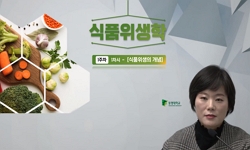Recently, the demand for the miniaturization of printed circuit boards has been increasing, as electronic devices have been sharply downsized. Conventional multi-layered PCBs are limited in terms their use with higher packaging densities. Therefore, a...
http://chineseinput.net/에서 pinyin(병음)방식으로 중국어를 변환할 수 있습니다.
변환된 중국어를 복사하여 사용하시면 됩니다.
- 中文 을 입력하시려면 zhongwen을 입력하시고 space를누르시면됩니다.
- 北京 을 입력하시려면 beijing을 입력하시고 space를 누르시면 됩니다.


Copper Seed Layer 형성 및 도금 첨가제에 따른 Copper Via Filling = Formation of Copper Seed Layers and Copper Via Filling with Various Additives
한글로보기https://www.riss.kr/link?id=A105149590
-
저자
이현주 (부산대학교) ; 지창욱 (부산대학교) ; 우성민 (부산대학교) ; 최만호 (부산대학교) ; 황윤회 (부산대학교) ; 이재호 (홍익대학교) ; 김양도 (부산대학교) ; Lee, Hyun-Ju ; Ji, Chang-Wook ; Woo, Sung-Min ; Choi, Man-Ho ; Hwang, Yoon-Hwae ; Lee, Jae-Ho ; Kim, Yang-Do
- 발행기관
- 학술지명
- 권호사항
-
발행연도
2012
-
작성언어
Korean
- 주제어
-
등재정보
SCOPUS,KCI등재,ESCI
-
자료형태
학술저널
- 발행기관 URL
-
수록면
335-341(7쪽)
-
KCI 피인용횟수
1
- DOI식별코드
- 제공처
-
0
상세조회 -
0
다운로드
부가정보
다국어 초록 (Multilingual Abstract)
Recently, the demand for the miniaturization of printed circuit boards has been increasing, as electronic devices have been sharply downsized. Conventional multi-layered PCBs are limited in terms their use with higher packaging densities. Therefore, a build-up process has been adopted as a new multi-layered PCB manufacturing process. In this process, via-holes are used to connect each conductive layer. After the connection of the interlayers created by electro copper plating, the via-holes are filled with a conductive paste. In this study, a desmear treatment, electroless plating and electroplating were carried out to investigate the optimum processing conditions for Cu via filling on a PCB. The desmear treatment involved swelling, etching, reduction, and an acid dip. A seed layer was formed on the via surface by electroless Cu plating. For Cu via filling, the electroplating of Cu from an acid sulfate bath containing typical additives such as PEG(polyethylene glycol), chloride ions, bis-(3-sodiumsulfopropyl disulfide) (SPS), and Janus Green B(JGB) was carried out. The desmear treatment clearly removes laser drilling residue and improves the surface roughness, which is necessary to ensure good adhesion of the Cu. A homogeneous and thick Cu seed layer was deposited on the samples after the desmear treatment. The 2,2'-Dipyridyl additive significantly improves the seed layer quality. SPS, PEG, and JGB additives are necessary to ensure defect-free bottom-up super filling.
참고문헌 (Reference)
1 T. Kobayashi, 47 : 85-, 2001
2 K. Takahashi, 40 : 3032-, 2001
3 P. C. Andricacos, 42 : 567-, 1998
4 A. J. Cobley, 37 : 15-, 2011
5 S. Miura, 169-170 : 91-, 2003
6 D. Josell, 149 (149): C637-, 2002
7 M. S. Park, 31 : 466-, 2011
8 C. H. Seah, 114 : 233-, 2001
9 W. -P. Dow, 54 : 5894-, 2009
10 P. P. Lau, 253 : 2357-, 2006
1 T. Kobayashi, 47 : 85-, 2001
2 K. Takahashi, 40 : 3032-, 2001
3 P. C. Andricacos, 42 : 567-, 1998
4 A. J. Cobley, 37 : 15-, 2011
5 S. Miura, 169-170 : 91-, 2003
6 D. Josell, 149 (149): C637-, 2002
7 M. S. Park, 31 : 466-, 2011
8 C. H. Seah, 114 : 233-, 2001
9 W. -P. Dow, 54 : 5894-, 2009
10 P. P. Lau, 253 : 2357-, 2006
동일학술지(권/호) 다른 논문
-
분극된 <001> 방위 Pb(Mg1/3Nb2/3)O3-PbTiO3 단결정의 유전 특성 및 상전이
- 한국재료학회
- 이은구
- 2012
- SCOPUS,KCI등재,ESCI
-
LBL법에 의해 TiO2막이 코팅된 광촉매 글라스 비드 제조
- 한국재료학회
- 이지선
- 2012
- SCOPUS,KCI등재,ESCI
-
3D패키지용 Via 구리충전 시 전류밀도와 유기첨가제의 영향
- 한국재료학회
- 최은혜
- 2012
- SCOPUS,KCI등재,ESCI
-
Sm 농도에 따른 무연 3상 유리계의 합성과 물리적 성질
- 한국재료학회
- 박종호
- 2012
- SCOPUS,KCI등재,ESCI
분석정보
인용정보 인용지수 설명보기
학술지 이력
| 연월일 | 이력구분 | 이력상세 | 등재구분 |
|---|---|---|---|
| 2023 | 평가예정 | 해외DB학술지평가 신청대상 (해외등재 학술지 평가) | |
| 2020-01-01 | 평가 | 등재학술지 유지 (해외등재 학술지 평가) |  |
| 2014-03-01 | 평가 | SCOPUS 등재 (기타) |  |
| 2011-01-01 | 평가 | 등재학술지 유지 (등재유지) |  |
| 2009-01-01 | 평가 | 등재학술지 유지 (등재유지) |  |
| 2007-01-01 | 평가 | 등재학술지 유지 (등재유지) |  |
| 2005-01-01 | 평가 | 등재학술지 유지 (등재유지) |  |
| 2002-01-01 | 평가 | 등재학술지 선정 (등재후보2차) |  |
| 1999-07-01 | 평가 | 등재후보학술지 선정 (신규평가) |  |
학술지 인용정보
| 기준연도 | WOS-KCI 통합IF(2년) | KCIF(2년) | KCIF(3년) |
|---|---|---|---|
| 2016 | 0.15 | 0.15 | 0.14 |
| KCIF(4년) | KCIF(5년) | 중심성지수(3년) | 즉시성지수 |
| 0.14 | 0.13 | 0.255 | 0.03 |




 ScienceON
ScienceON 코리아스칼라
코리아스칼라


